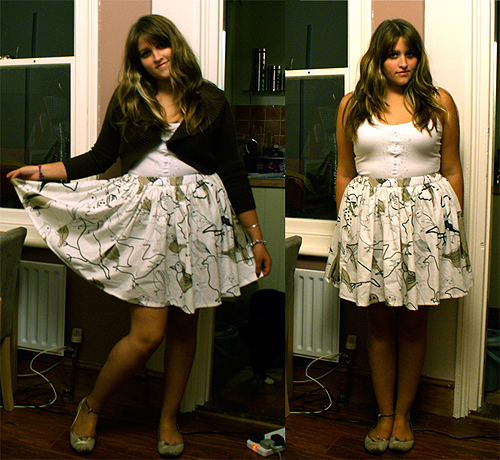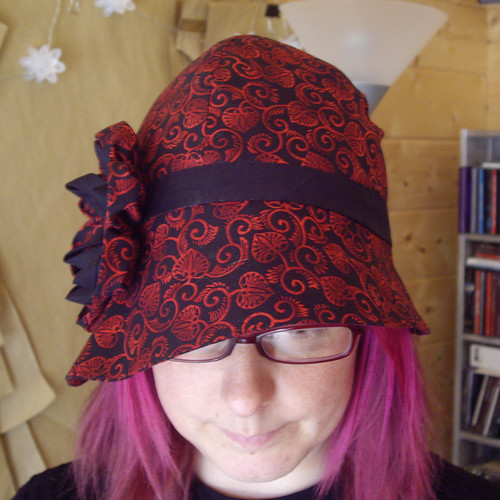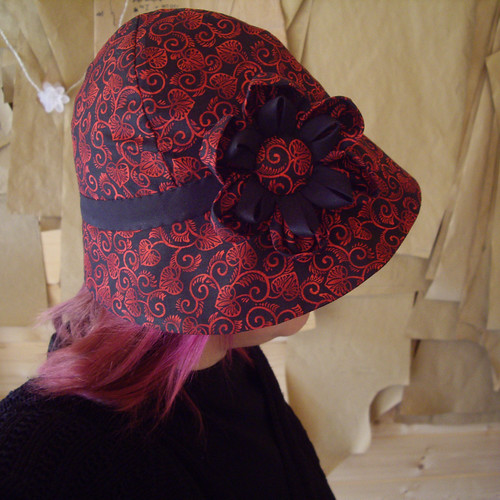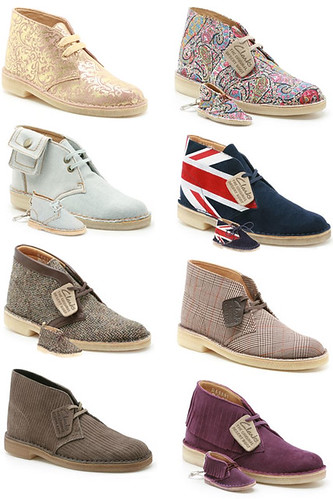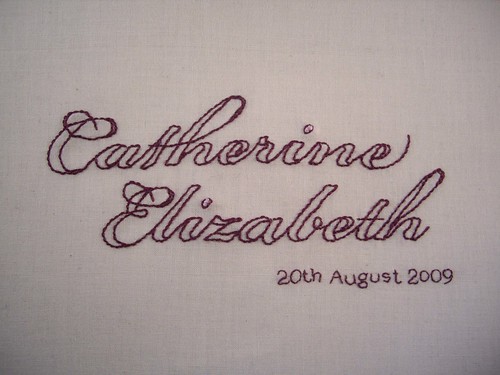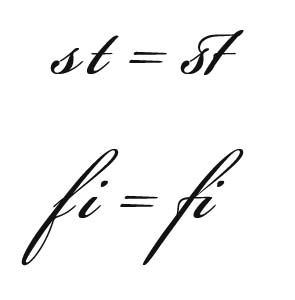Pink Salamander made a skirt, using my Gathered Skirt Tutorial.
The bird fabric is from IKEA – isn’t it adorable?
You can read all about the project over on Burda Style.
Ariane had a go at the Flower Brooch Tutorial, and came up with these gorgeous creations.
Not having a huge stash of buttons, she got creative and gathered up a strip of fabric to make the centre of the flowers. Beautiful, and clever!
You can see how Ariane did it over at her LiveJournal, British Cowgirl.
This is why I like writing tutorials – because I get to see what comes back from them. All of my projects use the absolute simplest of techniques, but you can come up with such an amazing variety of results. As Ariane demonstrated with her flower brooches, it doesn’t even matter if you don’t have all the “right” materials! You can use your own imagination and ingenuity, to make exactly what you want.
That, for me, is what sewing’s all about.
If you want to, you can learn professional techniques and make astonishingly complicated things. But these simple projects show that even as a complete beginner, you can pick up a needle and thread and make something beautiful.

